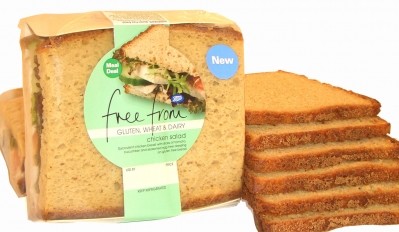New way to tackle IBS

If you’ve never heard of FODMAPs, you’re not alone. This slightly awkward acronym is relatively new and has nothing to do with restaurant guides. It was coined in 2006 by Australian researchers who discovered that certain carbohydrates are poorly fermented by the intestine and contribute to the symptoms of irritable bowel syndrome (IBS).
Dr Nick Read, medical advisor to the IBS Network, explains: “The gastroenterologist Peter Gibson and his team in Melbourne developed a new concept: poorly absorbed, low molecular weight sugars, present in many foods, could be partially fermented in the colon, producing gas and causing symptoms of bloating with flatulence and abdominal pain in people with IBS. While other short chain, osmotically-active sugars, which were less rapidly fermented, caused diarrhoea.”
The five symptom-causing foods identified by the researchers were fermentable oligosaccharides, disaccharides, monosaccharides and polyols, hence the acronym.
Gibson and his colleagues created an inventory of Australian foods with a high FODMAP content. They then put patients with IBS on a diet restricted in FODMAPs and noted an improvement in their symptoms. They followed this with a double blind challenge study in IBS patients known to be intolerant of FODMAPs and observed that reintroducing fructose and fructans reproduced the symptoms, while equivalent quantities of glucose did not.
Adapted for the UK (Return to top)
The concept has since attracted a research and medical following in the UK, where it has been adapted for a British diet by researchers at King’s College London, and approved as a second-line treatment for IBS by the British Dietetic Association.
“The low FODMAPs diet is being advocated by dieticians and some gastroenterologists in the UK and is also gaining ground in Europe,” affirmed Read.
There are some who believe FODMAPs could cross over into the food industry and become the next ‘free-from trend’, following in the footsteps of gluten-free (GF).
“Companies should keep an eye on FODMAP products and research as, although very niche at the moment, they could become a rival for GF,” says Laura-Daisy Jones, food science analyst at Mintel.
Tasneem Backhouse, sales and marketing director with EHL Ingredients, is also bullish about the prospects for FODMAP foods.
“We are already seeing increases in sales of ingredients that fit into gluten- and allergen-free foods and we predict this trend will grow further with the increase in awareness of FODMAP diets. We predict they will be an area for growth in 2015 and beyond with the diet not only set to be popular among IBS sufferers, but also among health-conscious consumers with an interest in nutrition.”
Whilst EHL Ingredients has not yet had any requests for FODMAP-free ingredients, the company receives requests for free-from ingredients. It sees this as a continuing trend.
Wide audience (Return to top)
Backhouse’s point that FODMAP-friendly foods have the potential to appeal to a wider audience than IBS sufferers alone is picked up by Mintel’s Jones, who says: “With more individuals experiencing digestive discomfort, FODMAP diets, along with GF diets, are emerging as an alternative therapy.”
A look at the Australian market shows that it’s more advanced in its development and provides some insight into the opportunities that could be in store for Europe.
In Australia, Dr Sue Shepherd, pioneer of the FODMAPs diet, is the driving force behind most new products. She has put her name to a range of FODMAP-friendly foods that include tomato pasta sauces, lamb & vegetable and pumpkin & sage soups, Thai green curry and paella meal kits, vegetable stock and GF jelly confectionery.
Shepherd is also founder of the FODMAP friendly certification programme, which allows products that are laboratory tested as being low in FODMAPs to carry a logo.
Accredited products span a number of categories and range from GF cereals by Kez’s Free and muesli cookies from Naturally Good, to chicken and fish seasoning mixes endorsed by Rick Grant, a leading GF chef and baker.
FODMAP launches are coming thick and fast on the Australian market. Since the start of 2014, Mintel’s Global New Products Database has tracked eight new introductions.
“The Sue Shepherd line of products and other FODMAP-friendly products have a huge pool of potentially interested consumers, including sufferers of IBS or simply digestive discomfort,” says Jones.
Not in agreement (Return to top)
But not everyone agrees that food manufacturers should be channelling their research and development efforts into FODMAPs. Dr Roberta Re, nutrition research manager at Leatherhead Food Research, is tentative about the opportunity.
Re points out that, owing to the nature of the diet and the foods involved, for example, garlic, onion, mushrooms, milk, yogurt, milk chocolate, beer, wine and many fruits, this could be quite a challenge and the palatability of the resulting products may be an issue without the use of flavour enhancers.
Michelle Berriedale-Johnson, director of the FreeFromAwards, meanwhile, is unconvinced that there is any future for FODMAP-free foods.
“I do not think that at this stage there would be a viable market for FODMAP-free foods, partly because they would be very hard to manufacture, partly because there is not a big enough market and partly because – unlike a GF diet – different people will need to exclude different foods or different quantities of FODMAP foods,” she claims.
“FODMAP diets can exclude such a wide range of ingredients that it would make manufacturing hard. Manufacturers struggle to get their heads round anything more than GF, so I just don’t think it’s realistic.”
Further barrier (Return to top)
A further barrier to the development of FODMAP-free products is the complexity of the diet, which requires expert delivery by a trained dietician.
“It is not as simple as following a list of ‘foods to eat’ and ‘foods not to eat’,” adds Re.
Indeed, as Read explains, it is not about eliminating low-FODMAP foods from the diet altogether.
“People can tolerate a modest amount of high-FODMAP foods and learn to identify which ones feature prominently in their diet and are associated with their symptoms. Some FODMAPs generate more gas in some people than others, depending on the strain, the ripening, the preparation and the cooking and presumably also the composition of their own bacterial flora.”
For this reason, he says, elimination is not necessary and, in his opinion, could cause more problems starving the bacteria and making the bowel more sensitive. Instead, he advises patients to identify which foods in their diet might be particularly implicated and cut those down to tolerable levels.
Despite the complexity of the low-FODMAP diet, Read still thinks there is mileage in developing low-FODMAP alternatives. Desserts and prepared foods are two categories that he pinpoints as being particularly problematic for FODMAP diet followers, as many prepared foods contain onions, and many desserts contain high-FODMAP fruits or dairy.
FODMAP is a minefield, but those manufacturers who are willing to negotiate it may well reap the rewards of early entry.














